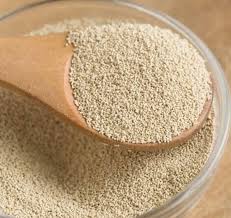Baking powder is a dry chemical leavening agent, essentially a mixture of sodium bicarbonate (baking soda) and a weak acid like cream of tartar, along with a filler like cornstarch, which together create a reaction when combined with liquid, releasing carbon dioxide gas that causes baked goods to rise and become light and fluffy; it’s commonly used in recipes like cakes, cookies, and muffins, and is considered a complete leavening agent because it contains both the base and acid needed for the reaction to occur.
-
Components:
- Sodium bicarbonate (baking soda): The alkaline base that produces carbon dioxide when combined with an acid.
- Acid component: Usually cream of tartar, which reacts with baking soda to create the gas.
- Filler: Cornstarch acts as a buffer to prevent the acid and base from reacting prematurely when stored.
- How it works:
When baking powder comes into contact with liquid, the acid and base react, releasing carbon dioxide gas which creates bubbles within the batter, causing it to expand and rise during baking.
- Sodium bicarbonate (baking soda): The alkaline base that produces carbon dioxide when combined with an acid.
-
Types of baking powder:
- Single-acting: Releases carbon dioxide gas only when it first comes into contact with liquid, so the batter needs to be baked immediately.
- Double-acting: Releases a small amount of gas when mixed with liquid and then releases the rest when heated in the oven, allowing for more flexibility in baking time.
- Single-acting: Releases carbon dioxide gas only when it first comes into contact with liquid, so the batter needs to be baked immediately.
-
Important considerations:
- Storage: Keep baking powder in a cool, dry place in an airtight container to prevent moisture from activating it prematurely.
- Substitution: While not a direct 1:1 replacement, baking soda can be used in conjunction with an acidic ingredient like vinegar or lemon juice if a recipe calls for baking powder.
- Storage: Keep baking powder in a cool, dry place in an airtight container to prevent moisture from activating it prematurely.








Reviews
There are no reviews yet.